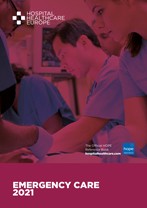Unintentional opioid exposure lead to most children in an emergency care department being discharged without incident even those admitted.
One study of US emergency department (ED) paediatric visits for poisoning from prescription opioids, identified 21,928 visits between 2006 and 2012.1 Any cases of poisoning in children under 6 years are generally considered to be unintentional. In a further analysis of unsupervised paediatric medication exposures at emergency departments, prescription opioids were the most common class of medicines involved.2 While there are several publications examining the prevalence of unintentional paediatric opioid exposure, much less attention has been paid to the outcomes associated with these ingestions.
This prompted a team from the Department of Pediatric Emergency Medicine, University of Alabama, US to undertake a retrospective analysis of the data collected by the Regional Poison Control Centre (RPCC), in Alabama, of children aged 0 to 6 years with possible opiate exposure over a three period.3 Using the RPCC database, the team identified cases for all of the major opioid drugs including buprenorphine, codeine, fentanyl, hydrocodone, hydromorphone, methadone and oxycodone. Additional information collected included basic demographics, clinical data, including symptoms and the outcomes if the child was admitted.
Findings
A total of 429 charts were identified as meeting the inclusion criteria. The median age of children was 2 years (64% male). Caretakers reported symptoms in 140 (32%) of all cases referred to the ED although the remaining 289 were asymptomatic. There were 113 children referred to the ED by the RPCC service and 122 who presented directly to the department. Therefore 235 were seen at the ED, of which in 152 cases (66%) there was no medical intervention. From a total of 231 opioid exposures, the most common drug was buprenorphine (13%), followed by codeine (8.6%). There were 65 children (28%) who were admitted to hospital, 41 directly from the ED and 24 from an outside facility. Among those admitted, the majority, 28, were 1-year olds. Furthermore, 5 of these children were admitted to intensive care and 28 of the children received naloxone, 3 required multiple doses and 5 a continuous infusion. There were no fatalities although one patient had ingested a significant amount of methadone and required active resuscitation and a naloxone drip. Overall, the median length of hospital stay was one day.
In their conclusion, the authors noted that although 28% of children had required admission to hospital, the outcome was positive for most with only a small number requiring medical intervention, mainly in the form of naloxone.
References
- Tadros A et al. Emergency department visits by pediatric patients for poisoning by prescription opioids. Am J Drug Alcohol Abuse 2016;42:550–5.
- Lovegrove MC et al. Trends in Emergency Department Visits for Unsupervised Pediatric Medication Exposures, 2004-2013. Pediatrics 2015;136(4):e821-9
- Ghosh P et al. Unintentional opioid ingestions presenting to a pediatric emergency department. Pediatr Emegr Care 2021;37:498–501.





